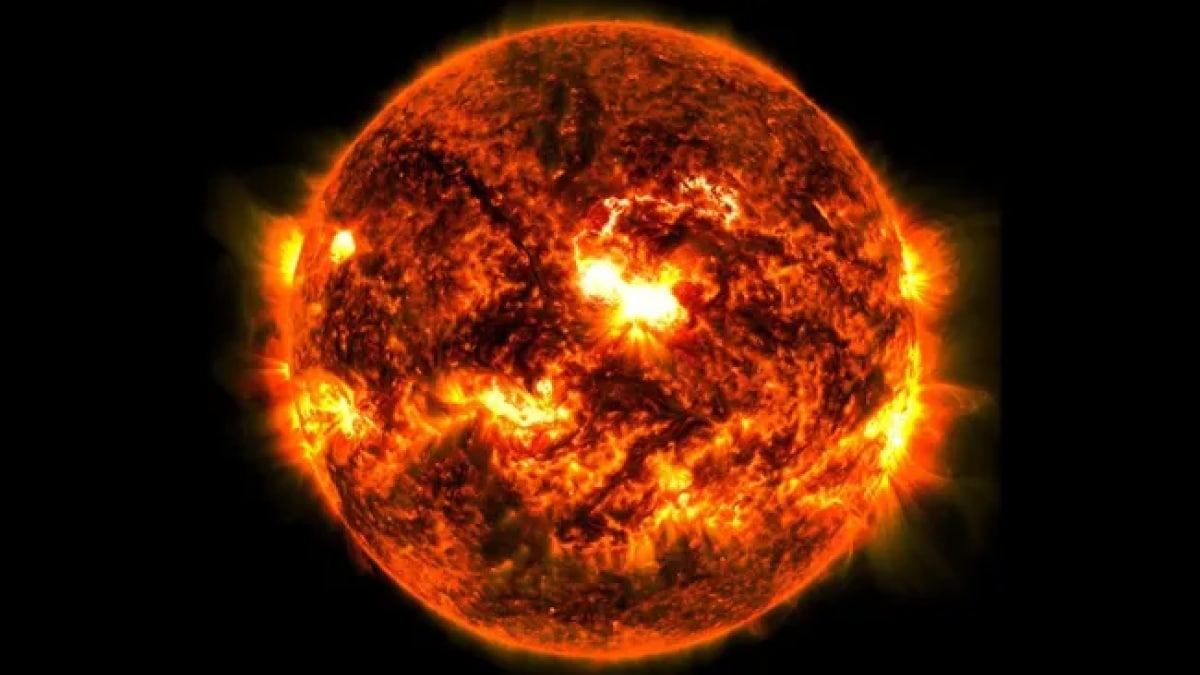The scientific community has been on high alert for days, and their concerns have now materialized. On Thursday night, around 9 PM Indian Standard Time, a massive solar storm impacted the Earth. This significant event poses potential risks to power grids and could disrupt GPS and radio communication systems temporarily.
Solar storms are phenomena that result from the Sun’s complex magnetic activity. When these storms occur, they can cause beautiful auroras to be visible in regions that typically do not experience them. Notably, in America, there is apprehension regarding how this solar storm could impact ongoing measures to address Cyclones Helen and Milton.
Understanding Solar Storms
According to reports from the National Oceanic and Atmospheric Administration (NOAA), the storm was prompted by a coronal mass ejection (CME) which erupted from the Sun on Tuesday evening. This cloud of solar plasma traveled towards Earth at an astonishing speed of 2.4 million kilometers per hour, reaching our planet on Thursday.
Severity of the Solar Storm
China’s Xinhua News Agency reported that this solar storm has been classified as G4 (severe), indicating a potential for significant disruptions. Regions across the globe may experience radio blackouts, and both GPS services and electricity grids could be adversely affected.
The Recent Solar Activity
Earlier this week, the Sun released an impressive solar flare classified in the X-class category, marking the most powerful explosion observed in the past seven years. Solar flares are among the most powerful explosions in our solar system, releasing energy equivalent to billions of hydrogen bombs, and the particles emitted travel at the speed of light.
What is a Solar Flare?
Solar flares occur when the Sun releases magnetic energy in the form of light and particles. These explosive events are categorized based on their intensity, with X-class flares being the most powerful. They are short-lived but can have lasting impacts on Earth’s atmosphere and technology.
What is a Coronal Mass Ejection (CME)?
Coronal mass ejections (CMEs) are vast clouds of solar plasma that are expelled from the Sun’s corona during solar storms. These clouds can expand significantly as they travel through space, often reaching several hundred thousand miles. When directed towards Earth, CMEs can interact with Earth’s magnetic field, leading to geomagnetic disturbances. These disturbances may result in short circuits for satellites, disrupt power grids, and pose dangers to astronauts in orbit.
Implications for Technology and Safety
The potential disruptions caused by solar storms underscore the importance of monitoring solar activity. As technology becomes increasingly reliant on satellite communication, understanding and preparing for the effects of solar storms is crucial for mitigating risks associated with power outages and loss of communication.
Conclusion
In conclusion, the recent solar storm serves as a reminder of the dynamic relationship between the Sun and Earth, emphasizing the need for continued research and preparedness. With such powerful celestial events impacting our planet, the vigilance of scientific communities and their monitoring efforts play a pivotal role in safeguarding technology and ensuring the safety of both terrestrial and orbital missions.












